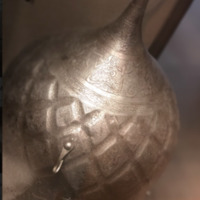Turban Helmet
Dublin Core
Title
Turban Helmet
Description
Created between 1450 and 1508 in Ak-Konyulu lands (now eastern Turkey, Armenia, Azerbaijan, northern Iraq, and western Iran), this Turban Helmet was used on horseback in the field. Made with silver, gold, and copper alloy, one can see the careful detail that was put into the creation of the helmet. Similarly, the helmet is inscribed with Arabic stating, "Made at the order of the greatest sultan, the mightiest Khaqan, the master of the necks of the nations, the lord of the kings of the Arabs and Persians, the shadow of Allah on the continents...". The shape of the helmet is unique, similar to a dome of a mosque. Knights chose certain alterations to more practical weapons to demonstrate certain characteristics. These details would not be practical for war, but rather demonstrative of the cultural impact war had on middle ages and how that impacted how people represented themselves in war. This helmet is one of many examples of the artistry that was put into items used in war and traditions of war. Moreover, this helmet demonstrates that the artistry and attention put towards the art of war was widespread throughout the Medieval World.
Creator
Photo taken by Elena Prieto
Source
This piece is on exhibit at the PMA.
Files
Citation
Photo taken by Elena Prieto, “Turban Helmet,” War & Conquest in Medieval Europe, accessed June 17, 2024, https://pennds.org/warandconquest/items/show/56.


